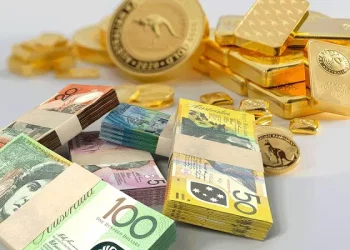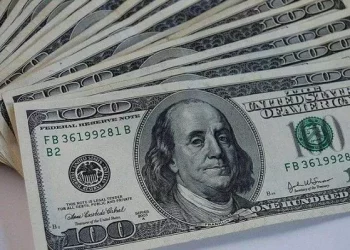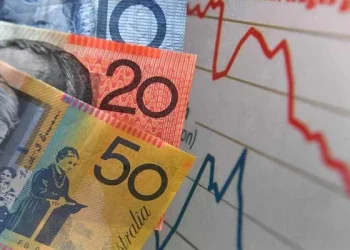The world of foreign exchange (forex) is a vast, complex, and dynamic space where currencies are exchanged daily by businesses, governments, and individuals. Currency exchange rates are the key drivers of this market, determining how much one currency is worth in relation to another. For those interested in the currencies of India and Vietnam, a common question that arises is: How much is 100 Indian Rupees (INR) in Vietnamese Dong (VND)?
In this article, we will explore the exchange rate between the Indian Rupee and the Vietnamese Dong, factors influencing this rate, and how forex traders, travelers, and businesses can make informed decisions when dealing with these currencies.
Understanding the Indian Rupee and Vietnamese Dong
Before delving into the exchange rate between the Indian Rupee (INR) and Vietnamese Dong (VND), let’s briefly understand what each of these currencies represents.
Indian Rupee (INR)
The Indian Rupee is the official currency of India, one of the world’s largest and fastest-growing economies. The symbol for the Indian Rupee is ₹, and its ISO code is INR. The currency is issued and controlled by the Reserve Bank of India (RBI), which is the central bank responsible for regulating monetary policy, including the management of exchange rates.
India’s economy is diverse, encompassing agriculture, manufacturing, and service sectors, which all contribute to the demand for the Indian Rupee. With a population of over 1.4 billion, India plays a significant role in international trade, making the Rupee a highly traded currency in the global market.
Vietnamese Dong (VND)
The Vietnamese Dong, symbolized as ₫, is the currency of Vietnam, which has seen rapid economic development in recent decades. The central bank of Vietnam, known as the State Bank of Vietnam (SBV), is responsible for issuing the Dong and maintaining the country’s monetary policy. Vietnam’s economy is heavily driven by export-oriented industries, including textiles, electronics, and agricultural products.
Despite its growing economy, the Vietnamese Dong remains one of the lesser-valued currencies in the world. Due to the lower value of the Dong compared to many other currencies, the exchange rate between the Vietnamese Dong and other major currencies often appears more favorable to foreigners.
The Exchange Rate Between INR and VND
The exchange rate between two currencies tells you how much of one currency is required to purchase a unit of the other currency. In the case of Indian Rupees (INR) and Vietnamese Dong (VND), the exchange rate fluctuates daily based on market demand, geopolitical factors, economic reports, and the broader foreign exchange market dynamics.
As of the most recent data, the exchange rate is typically around:
1 INR = 300-350 VND
This means that if you were to exchange 100 Indian Rupees, you would receive between 30,000 to 35,000 Vietnamese Dong depending on the specific market conditions at the time. It is important to note that exchange rates fluctuate continuously, and the rate you receive can be influenced by where and how you exchange your money.
Factors Influencing the Exchange Rate Between INR and VND
Several factors influence the exchange rate between the Indian Rupee and the Vietnamese Dong. These include:
1. Economic Performance and Growth Rates
The economic health of both India and Vietnam directly impacts the strength of their currencies. If India’s economy grows faster than Vietnam’s, the Indian Rupee may appreciate against the Vietnamese Dong. Similarly, if Vietnam’s economy is growing faster, the Dong may strengthen relative to the Rupee.
2. Interest Rates and Monetary Policy
Central banks control the money supply and interest rates, which in turn affect currency values. Higher interest rates typically attract foreign investment, increasing demand for the currency and causing it to appreciate. If the Reserve Bank of India (RBI) or the State Bank of Vietnam (SBV) changes interest rates, it could lead to a shift in the INR-VND exchange rate.
3. Inflation
Inflation rates in each country also play a crucial role in currency exchange rates. Countries with higher inflation rates tend to experience depreciation in their currencies because the purchasing power of the currency erodes over time. India has experienced fluctuating inflation levels, which can impact the value of the Indian Rupee relative to the Vietnamese Dong.
4. Trade Balances
Both India and Vietnam engage in international trade. India exports products like petroleum products, jewelry, chemicals, and textiles, while Vietnam is known for its exports of electronics, textiles, and agricultural products. If India runs a trade deficit (importing more than it exports) while Vietnam has a trade surplus, the Indian Rupee may weaken against the Vietnamese Dong due to higher demand for the Dong in international trade.
5. Political Stability and Global Events
Political stability is essential for maintaining investor confidence in a country’s currency. Events such as changes in government, political unrest, or global crises like the COVID-19 pandemic can cause fluctuations in currency values. Both India and Vietnam have experienced political changes and market volatility, which can impact the INR-VND exchange rate.
6. Speculation and Market Sentiment
Forex traders and investors play a significant role in driving exchange rates. If traders believe that the Indian Rupee will strengthen against the Vietnamese Dong, they may buy INR, causing its value to increase. Likewise, if there is a widespread belief that the Vietnamese Dong will appreciate, traders may exchange more VND, influencing the rate.
Converting 100 Indian Rupees into Vietnamese Dong
Given the exchange rate of approximately 1 INR = 300-350 VND, if you were to exchange 100 Indian Rupees for Vietnamese Dong, you would receive:
100 INR × 300 VND = 30,000 VND
100 INR × 350 VND = 35,000 VND
Thus, 100 Indian Rupees would give you between 30,000 and 35,000 Vietnamese Dong, depending on the current exchange rate. However, it’s important to note that exchange rates can vary slightly based on where the transaction takes place, such as at a bank, a currency exchange counter, or through an online platform.
How to Exchange INR to VND
If you need to exchange Indian Rupees to Vietnamese Dong, there are several options available:
1. Currency Exchange Services
One of the most common ways to exchange currencies is through currency exchange offices, both at local branches and at airports. These services typically provide physical cash but may offer slightly less favorable rates compared to banks or online platforms.
2. Banks
Many banks offer currency exchange services, and they usually provide a secure and reliable way to convert Indian Rupees to Vietnamese Dong. Banks may offer better exchange rates than physical exchange counters, but they might charge a fee for the transaction.
3. Online Currency Exchange Platforms
With the rise of digital banking and online financial services, many people now opt to exchange currencies online. Several platforms offer competitive rates, allowing you to exchange your Indian Rupees for Vietnamese Dong electronically and transfer funds to your bank account or digital wallet.
4. ATMs
If you are traveling in Vietnam and need to withdraw Vietnamese Dong, you can use ATMs to exchange your Indian Rupees into Dong, although you may be subject to foreign exchange fees and a lower conversion rate.
Impact of Exchange Rates on Trade and Travel
Exchange rates have significant implications for both businesses and individuals. Whether you are a business owner importing goods from India, a tourist visiting Vietnam, or a forex trader, understanding how the INR-VND exchange rate works is crucial.
For Businesses
Businesses that import or export goods between India and Vietnam need to closely monitor the INR-VND exchange rate. Fluctuations in the exchange rate can affect the profitability of transactions. For example, if the Indian Rupee weakens against the Vietnamese Dong, Indian exporters may receive fewer Dong for their products, reducing their profits. On the other hand, if the Rupee strengthens, Indian consumers could benefit from cheaper imports from Vietnam.
For Travelers
Travelers moving between India and Vietnam should be aware of the current exchange rate to make informed decisions about when and where to exchange their money. Many travelers prefer to exchange a small amount of currency before they arrive at their destination, while others may wait until they get to Vietnam to exchange larger amounts. Always keep an eye on the exchange rate to ensure that you are getting the best deal.
For Forex Traders
Forex traders looking to profit from currency fluctuations between the INR and VND should study the factors that influence exchange rates and consider using technical and fundamental analysis to predict market trends. By accurately forecasting changes in the INR-VND exchange rate, traders can take advantage of price movements to make profits.
Conclusion
In conclusion, 100 Indian Rupees is approximately equivalent to 30,000 to 35,000 Vietnamese Dong based on current exchange rates, but this figure can fluctuate due to various economic, political, and market factors. Whether you’re a traveler, business owner, or forex trader, understanding the relationship between the Indian Rupee and the Vietnamese Dong is essential for making informed financial decisions. Currency exchange rates are not static, so it’s important to stay updated with current trends to ensure the best possible exchange rate.
Related Topics:

























